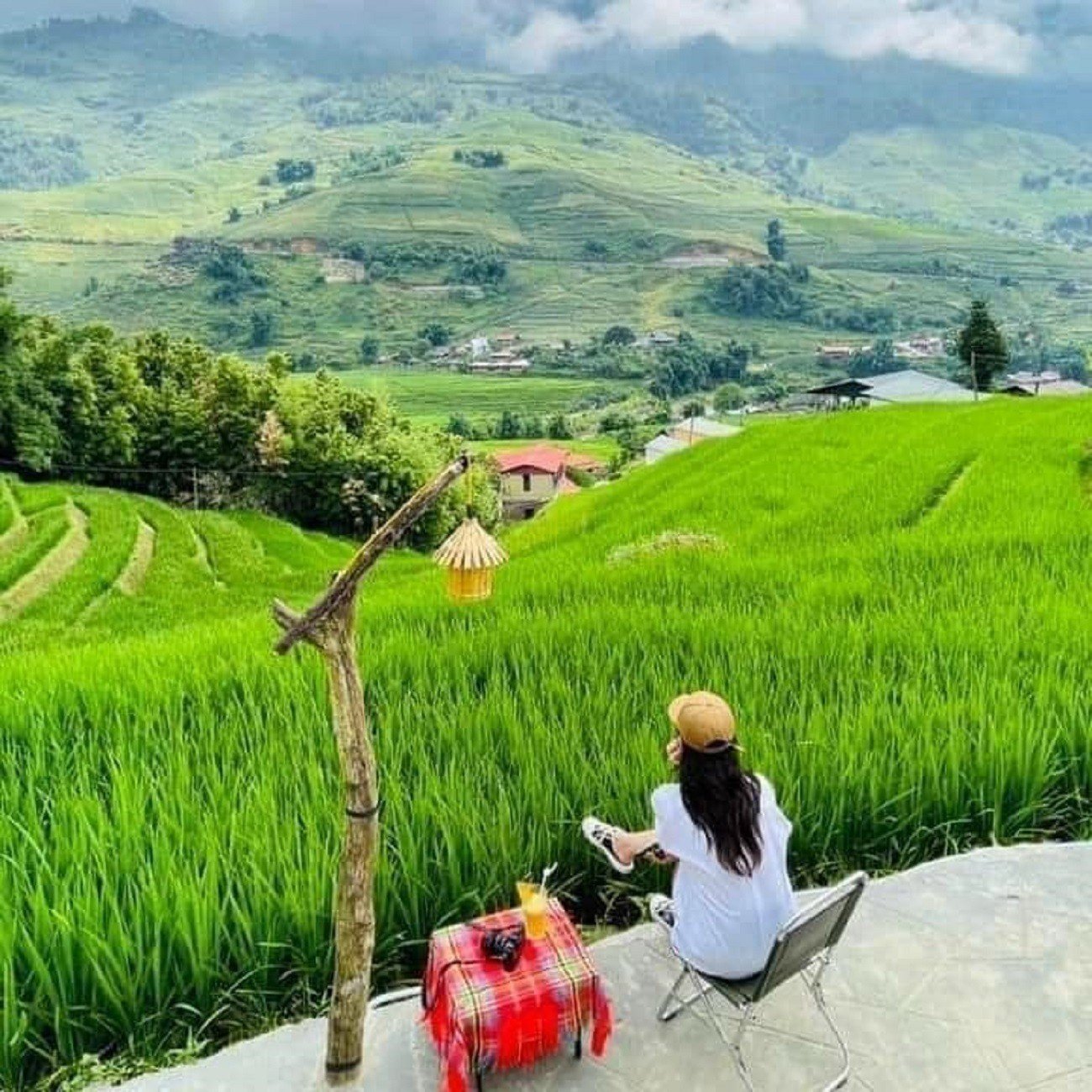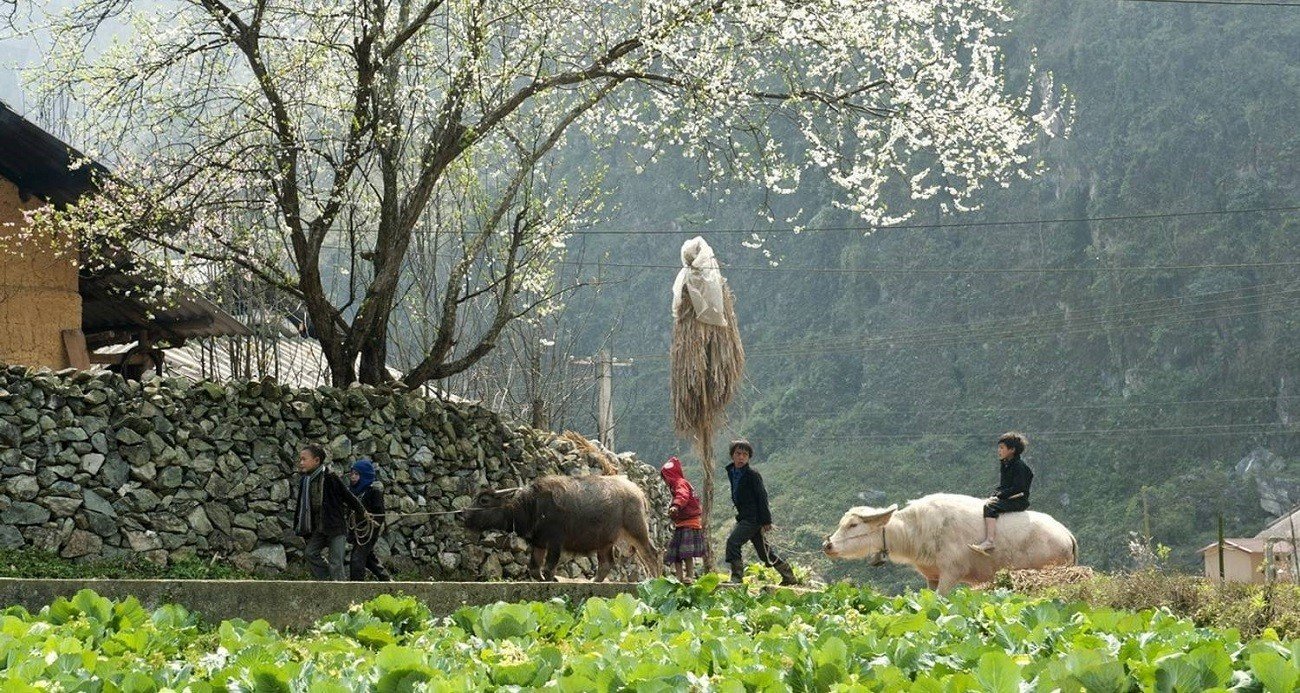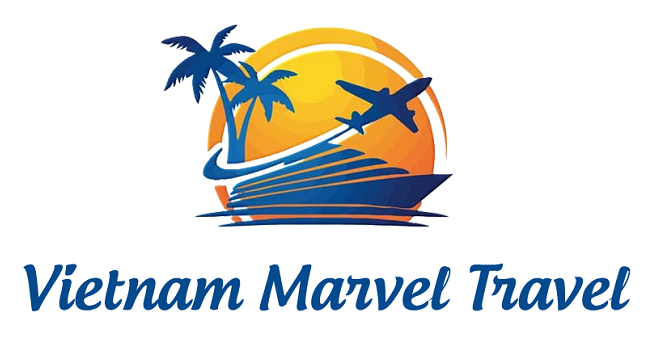Vietnam Rainy Season 2026-2027: 15 Essential Travel Tips You Need
Planning a trip to Vietnam during the rainy season in 2026-2027? Understanding Vietnam’s unique monsoon patterns is crucial for an enjoyable experience. This comprehensive guide provides region-specific insights, practical advice, and expert recommendations to help you make the most of your Vietnamese adventure, even when the skies open up.
When Exactly Is Vietnam’s Rainy Season in 2026-2027?
Vietnam’s elongated geography creates distinct rainy seasons across its regions. According to the latest meteorological projections from Vietnam’s National Center for Hydro-Meteorological Forecasting, here’s what to expect during 2026-2027:

Northern Vietnam (Hanoi, Ha Long Bay, Sapa)
- Primary Rainy Period: May to September 2026
- Peak Rainfall Months: July and August (250-300mm per month)
- Temperature Range: 26-34°C (79-93°F)
- Humidity Levels: 80-90% during peak monsoon
The rainy season in Northern Vietnam brings afternoon downpours rather than all-day precipitation. In Ha Long Bay, expect misty mornings that create a mystical atmosphere around the limestone karsts. Morning tours typically enjoy clearer weather, with storms rolling in after 2 PM.
Central Vietnam (Hue, Da Nang, Hoi An)
- Primary Rainy Period: September to December 2026
- Peak Rainfall Months: October and November (550-600mm per month)
- Temperature Range: 24-31°C (75-88°F)
- Flooding Risk: Moderate to high in Hoi An’s low-lying areas
Central Vietnam experiences the heaviest rainfall in the country. The historic town of Hoi An may face street flooding during peak rainy season, particularly in October 2026, when local authorities predict above-average precipitation based on oceanic temperature patterns.
Southern Vietnam (Ho Chi Minh City, Mekong Delta)
- Primary Rainy Period: May to November 2026
- Peak Rainfall Months: June through September (250-350mm per month)
- Temperature Range: 25-33°C (77-91°F)
- Rain Pattern: Brief but intense afternoon showers lasting 1-3 hours
The southern region’s tropical monsoon climate delivers predictable afternoon showers that rarely disrupt an entire day. The Mekong Delta transforms during this season, with water levels rising 1.5-2 meters above dry season averages, creating lush landscapes perfect for photography.

5 Surprising Benefits of Traveling Vietnam During Rainy Season 2026-2027
Many travelers avoid monsoon season, but this time offers unique advantages that the peak tourist periods can’t match:
1. Significantly Lower Prices Across All Services
During the 2026-2027 rainy season, expect accommodations to be 15-30% cheaper than in dry months. Five-star hotels in Ho Chi Minh City drop from an average of $150/night to about $95-120/night. Premium cruises in Ha Long Bay offer discounts of up to 25%, with luxury cabin rates falling from $250 to approximately $190 per night.
2. Fewer Crowds at Major Attractions
Vietnam’s UNESCO World Heritage Sites like Ha Long Bay typically see 6,000-8,000 daily visitors during peak season. During rainy months in 2026-2027, these numbers are projected to drop to 2,500-3,500 visitors, allowing for more intimate experiences.
3. Spectacular Green Landscapes
The rice terraces of Sapa and Mu Cang Chai reach their pinnacle of beauty during the rainy season, displaying vibrant emerald hues against misty mountain backdrops. The rice planting season typically begins in May, with harvesting in September—both perfect times to witness these agricultural landscapes at their most photogenic.
4. Unique Cultural Experiences
The rainy season coincides with several important Vietnamese festivals. The Mid-Autumn Festival (September 2026) features colorful lantern displays that reflect beautifully on rain-slicked streets, while the Hue Festival (June 2026) showcases imperial traditions with fewer international tourists present.
5. More Authentic Local Interactions
With fewer tourists competing for attention, local artisans, guides, and vendors have more time to share their knowledge and culture. Cooking classes in Hoi An (typically $45-65 per person) often include market tours that are more relaxed and educational during the less crowded rainy season.
Essential Packing List for Vietnam’s Rainy Season 2026-2027
Preparing properly for Vietnam’s wet weather ensures comfort without overpacking. Based on insights from seasoned travelers and local guides, here’s what should make your packing list:
Weather Protection Essentials
- Lightweight, packable rain jacket (preferably with ventilation features)
- Quick-dry clothing made from synthetic materials or merino wool
- Waterproof phone case or pouch (rated IPX8 for full submersion protection)
- Compact travel umbrella with wind-resistant features
- Waterproof backpack cover or dry bags for electronics (10-15L size recommended)
Footwear Considerations
- Quick-drying, closed-toe sandals with good traction (brands like Keen or Teva)
- Waterproof hiking shoes if trekking in Sapa or other mountainous regions
- Flip-flops for navigating potentially flooded streets in urban areas
Health and Comfort Items
- High-DEET mosquito repellent (30-50% concentration)
- Anti-fungal foot powder to prevent infections from constant moisture
- Electrolyte packets to replace minerals lost through increased sweating
- Portable fan for high humidity days when air conditioning isn’t available
Region-Specific Travel Strategies for 2026-2027
Each region of Vietnam requires different approaches during the rainy season. Here’s how to maximize your experience in each area:
Northern Vietnam Rainy Season Strategy
Northern Vietnam’s summer monsoon brings hot, humid conditions with frequent afternoon downpours. To make the most of your visit:
- Book Ha Long Bay cruises with flexible itineraries that can adapt to changing weather conditions. Luxury cruises typically offer indoor activities like cooking classes and spa treatments during rain showers.
- Plan Sapa trekking for early morning departures (6-7 AM) to avoid afternoon storms. The mountains are usually clearest between sunrise and 11 AM.
- Include buffer days in your Northern Vietnam itinerary to accommodate weather-related schedule changes, especially if visiting remote areas like Ha Giang or Cao Bang.
- Visit Hanoi’s indoor attractions like the Vietnam Museum of Ethnology (18,000 artifacts spanning 54 ethnic groups) and Train Street cafés during peak rainfall hours (typically 2-5 PM).
Central Vietnam Rainy Season Strategy
Central Vietnam experiences its heaviest rainfall from September through November, with potential for flooding and occasional typhoons. Navigate this challenging season by:
- Staying in Hoi An accommodations on higher ground, at least 1-2 km from the Thu Bon River to minimize flood impacts.
- Booking hotels with generator backup as power outages can last 4-6 hours during severe storms.
- Planning indoor cultural activities like lantern-making workshops, cooking classes, and tailoring appointments for rainy afternoons.
- Monitoring weather forecasts daily using apps like Windy.com or AccuWeather, which provide highly accurate 3-day forecasts for Central Vietnam.
Southern Vietnam Rainy Season Strategy
Southern Vietnam’s predictable afternoon showers are easier to plan around:
- Schedule outdoor activities between 7-11 AM when skies are typically clearer.
- Book covered boat tours in the Mekong Delta that operate regardless of rainfall—the elevated water levels actually enhance the floating market experience at Cai Rang and Cai Be.
- Use ride-hailing apps like Grab instead of walking during rain showers in Ho Chi Minh City, where streets can quickly accumulate 10-15 cm of water.
- Visit indoor markets and museums during typical afternoon rain times (2-5 PM), including Ben Thanh Market and the War Remnants Museum.
7 Outstanding Rainy Season Activities in Vietnam (2026-2027)
The monsoon season offers unique experiences unavailable during drier months:
1. Luxury Ha Long Bay Cruise with Rainy Season Specials
Premium cruise operators offer special rainy season packages with added indoor amenities. The atmospheric fog surrounding the limestone karsts creates otherworldly photo opportunities, especially during the golden hour after rain clears. Cruises typically feature 20-30% discounts during May-September 2026.
2. Photographing Rice Terraces in Sapa and Mu Cang Chai
The rice terraces transform dramatically through the rainy season:
- May-June: Emerald-green young rice plants
- July-August: Deepening green mature plants
- September: Golden harvest hues
Professional photographers recommend shooting either early morning (5-7 AM) or after rainfall when mist envelops the mountains.
3. Cooking Classes in Historic Hoi An
Rainy afternoons provide perfect opportunities to learn Vietnamese cuisine indoors. Prestigious cooking schools like Morning Glory and Red Bridge offer 3-5 hour classes featuring 4-6 traditional Central Vietnamese dishes. Classes typically include market tours under covered walkways and intimate class sizes (8-12 students) during rainy season.
4. Exploring Vietnam’s Café Culture
Vietnam’s renowned coffee scene thrives during rainy season. In Hanoi, visit specialty cafés like The Note Coffee (covered in colorful post-it notes) or Café Giang (birthplace of egg coffee). Ho Chi Minh City’s District 1 features architectural gems like Café Apartments at 42 Nguyen Hue, housing 30+ unique cafés in a repurposed apartment building.
5. Wellness Retreats with Rain-Themed Treatments
High-end resorts offer special monsoon packages incorporating rain-inspired treatments. For example, Almanity Hoi An offers a “Rainy Season Renewal” package featuring a 90-minute massage using heated herbal compresses designed to counter monsoon dampness, priced at approximately $85 compared to $120 during peak season.
6. Mekong Delta Floating Market Experience
During the rainy season, the Mekong River swells by 1.5-2 meters, creating deeper waterways for the floating markets. The Cai Rang floating market (4 AM to 10 AM daily) becomes especially vibrant, with over 400 boats selling fresh produce harvested from rain-nourished fields.
7. Enjoying Vietnam’s Rainy Season Cuisine
Several Vietnamese dishes are particularly satisfying during wet weather:
- Cháo (rice porridge): Warming comfort food available with various toppings
- Bánh xèo (crispy rice pancakes): Perfect with the sound of rain outside
- Bún bò Huế: Spicy beef noodle soup that warms from within
Weather Patterns and Climate Predictions for 2026-2027
Based on climate modeling from Vietnam’s National Center for Hydro-Meteorological Forecasting and the ASEAN Specialised Meteorological Centre, here’s what travelers should anticipate:
El Niño-Southern Oscillation (ENSO) Effects
The 2026-2027 period is predicted to transition from El Niño to neutral conditions, potentially leading to:
- Less severe typhoon activity in Central Vietnam (average of 3-4 storms compared to the historical average of 5-6)
- Slightly higher temperatures across all regions (0.5-1°C above historical averages)
- More concentrated rainfall patterns with potentially heavier downpours but fewer rainy days overall
Monthly Rainfall Predictions (in millimeters)
Northern Vietnam (Hanoi)
- May 2026: 150-180mm
- June 2026: 200-240mm
- July 2026: 260-300mm
- August 2026: 280-320mm
- September 2026: 230-270mm
Central Vietnam (Da Nang)
- September 2026: 340-380mm
- October 2026: 550-600mm
- November 2026: 520-580mm
- December 2026: 160-200mm
Southern Vietnam (Ho Chi Minh City)
- May 2026: 180-220mm
- June 2026: 300-340mm
- July 2026: 290-330mm
- August 2026: 270-310mm
- September 2026: 320-360mm
- October 2026: 250-290mm
- November 2026: 120-160mm
Rainy Season Safety Tips for Vietnam (2026-2027)
While the rainy season rarely poses serious dangers to travelers, these safety precautions will ensure peace of mind:
Flood Awareness in Urban Areas
- Monitor local news channels for flood warnings, especially in Hoi An and parts of Ho Chi Minh City
- Download the Vietnam Disaster Monitoring app which provides real-time alerts in English
- Avoid wading through floodwaters deeper than ankle height, as urban flooding may conceal open manholes
Transportation Safety
- Book reputable transportation providers with well-maintained vehicles
- Allow 30-50% extra travel time for road journeys during heavy rain
- Consider trains between major cities during peak monsoon months, as Vietnam Railways maintains excellent on-time performance despite weather conditions
Health Precautions
- Stay current on vaccinations, particularly tetanus and hepatitis A
- Carry basic medications for waterborne illnesses
- Drink only bottled or purified water, especially after heavy rainfall when water systems may be compromised
Booking Strategies for Vietnam’s Rainy Season 2026-2027
Strategic booking can maximize value while minimizing weather-related disruptions:
Optimal Booking Windows
- Book accommodations 2-3 months in advance to secure rainy season discounts while maintaining good selection
- Reserve Ha Long Bay cruises 1-2 months ahead with operators offering flexible rescheduling policies
- Purchase domestic flights 3-4 weeks before travel when prices typically drop for rainy season dates
Accommodation Recommendations
- Select hotels with covered walkways or indoor corridors rather than open-air designs
- Choose rooms on higher floors (at least 2nd floor) in flood-prone areas
- Book properties with backup power systems in Central Vietnam during October-November
Tour Booking Considerations
- Verify rain contingency plans before booking any outdoor tours
- Look for “rainy season guarantees” that offer alternative activities or partial refunds for severely impacted experiences
- Consider private tours which offer more flexibility to adjust timing around weather conditions
Planning an 8-Day Vietnam Itinerary During Rainy Season
If you’re planning a comprehensive 8-day tour of Vietnam during the rainy season, consider this weather-optimized itinerary:
Days 1-2: Hanoi
- Morning activities: Old Quarter walking tour, Temple of Literature (covered walkways)
- Afternoon contingencies: Vietnamese Women’s Museum, Hoa Lo Prison Museum
- Evening experiences: Water puppet show (indoor), street food tour with covered eating areas
Days 3-4: Ha Long Bay
- Cruise selection: Choose a luxury vessel with indoor observation lounges
- Activity focus: Morning kayaking, afternoon cooking classes or spa treatments
- Photography opportunities: Capture misty karsts during clearing periods after rain
Days 5-6: Hue and Da Nang
- Morning visits: Imperial Citadel, Thien Mu Pagoda
- Afternoon alternatives: Royal tombs (partially covered) or Dong Ba Market (covered)
- Evening activities: Hue royal cuisine dining experiences in restored historic homes
Days 7-8: Ho Chi Minh City
- Morning explorations: Reunification Palace, War Remnants Museum
- Afternoon options: Café hopping in District 1, Saigon Opera House tour
- Evening experiences: Rooftop bars with covered sections, indoor cultural performances
Conclusion: Embracing Vietnam’s Rainy Season Magic
Vietnam’s rainy season offers a unique perspective on this beautiful country that many travelers never experience. The lush landscapes, reduced crowds, and significant cost savings make 2026-2027 an excellent time to explore Vietnam for travelers willing to adapt to occasional wet weather.
By understanding regional rainfall patterns, packing appropriately, and planning flexible itineraries, you can turn what might seem like a disadvantage into one of the highlights of your Vietnamese adventure. The misty mountains of Sapa, the moody atmospherics of Ha Long Bay, and the vibrant green rice fields of the Mekong Delta showcase Vietnam at its most photogenic and authentic.
Remember that rain in Vietnam is rarely an all-day affair—most regions experience predictable patterns that still allow plenty of time for exploration, with the added benefit of more intimate cultural experiences and interactions with locals who appreciate visitors during the quieter monsoon months.
FAQs About Vietnam’s Rainy Season 2026-2027
Q: Is it worth visiting Vietnam during the rainy season?
A: Absolutely. You’ll benefit from 15-30% lower prices, fewer crowds, and lush green landscapes. Most rain falls in predictable patterns, allowing for planning around showers.
Q: When is the best time to visit Ha Long Bay during rainy season?
A: May and September offer the best balance of reduced rainfall and reasonable prices. Luxury cruises operate year-round with indoor amenities that make even rainy days comfortable and scenic.
Q: How do I prepare for potential flooding in Hoi An?
A: Book accommodations away from the river, at least 1-2 kilometers from the Ancient Town. Pack waterproof footwear and stay informed about weather forecasts through local news or hotel staff.
Q: Are there any health concerns specific to Vietnam’s rainy season?
A: Mosquito-borne illnesses increase slightly during rainy months. Use repellent with 30-50% DEET, especially in rural areas, and ensure accommodations have proper window screens or bed nets if necessary.
Q: Can I still trek in Sapa during the rainy season?
A: Yes, but plan treks for early morning (6-9 AM) when visibility is best. Work with local guides who know alternative routes during heavy rain periods, and pack proper waterproof gear.
Contact Information
Website: vietnammarveltravel.com
Email: vietnammarveltravel@gmail.com
Phone: +84.978.358.422
WhatsApp: +84 978.358.422
Vietnam Marvel Travel – Your Gateway to Authentic Vietnam Experiences
Read Our Reviews: Check out genuine traveler experiences and ratings on Vietnam Marvel Travel Review on TripAdvisor to see why we’re the preferred choice for Northern Vietnam adventures.

